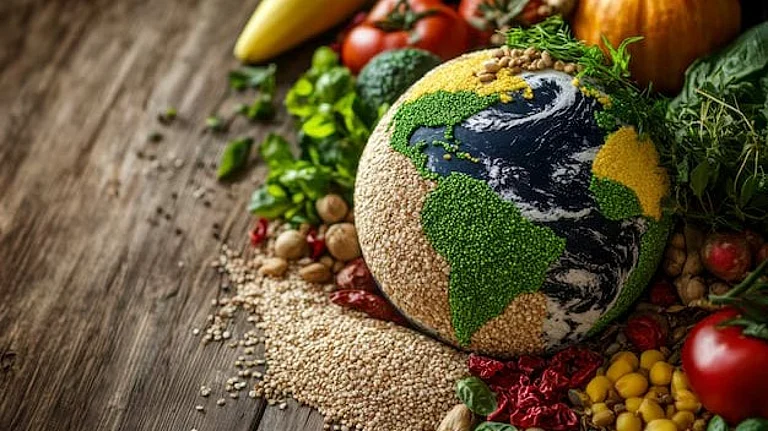Kareena Kapoor says she’s been a fan since she was 16. She isn’t the only one — every year, Unilever sells over 1 billion sticks of Magnum ice cream that account for 2% of the parent firm’s global revenue. It has taken a while for the Dutch MNC to bring Magnum, the world’s largest selling ice cream, to India. Magnum was introduced in Europe over 20 years ago and yet is taking a slow approach to the launch. Hindustan Unilever (HUL), the second-biggest ice cream brand after Amul, soft launched Magnum in Chennai during April 2013. Only now it is seeking a national rollout for the ice cream, albeit with Kapoor as its brand ambassador. It is now available in four more cities — Mumbai, Pune, Hyderabad and Bengaluru. The larger question, though, is: will Indians warm up to the idea of paying ₹85 for a cold dessert bought from a kirana store?
Hot and cold
Currently, Magnum is by far the most expensive mass-market ice cream available in India. Available in three flavours, it is priced at ₹85 for a 90-ml stick compared with ₹45 for a Cornetto, also owned by HUL. Unilever is taking a mixed approach of exclusive and mass to push the product; it’s available at your neighbourhood grocery store, but is stored in branded freezers provided by the company. And like other premium ice cream brands available in India, such as Haagen-Dazs and London Dairy, Magnum is imported (from Thailand) and not manufactured in India. The thinking behind the launch is pretty straightforward. Per capita ice cream consumption in India is still minuscule, just 250 ml a year, compared with 2 litre in China and over 20 litre a year in the US. Moreover, as discretionary income increases, consumers across the board are showing a willingness to switch to premium offerings in most products and there is no reason to suppose ice cream would be any different. “There are enough opportunities to increase the consumption at both the affordable and premium end of the market,” thinks Sapan Sharma, general manager (ice cream), Hindustan Unilever.
That’s the glass half full view. Look at it another way and the premium end of the market accounts for only 10% of the ₹3,620 crore ice cream industry, according to Euromonitor. Of course, this is a growth of more than two-and-a-half times over the ₹1,452 crore registered in 2008, when premium brands accounted for 5% of the market. But Subroto Mukherjee, former COO (SAARC region) at Baskin Robbins and now CEO of Foodplus, which runs gourmet burger restaurant chain Burgs, maintains HUL will find the going difficult. “If Magnum has to work, it should be widely available in hypermarkets and large supermarkets, where many shoppers come and inducing trials is possible. Selling it in smaller formats will not work since there is very little commitment from the shop owner,” he says.
The decision to import rather than manufacture the ice cream at home may also work against Magnum. “This can eat into gross margins and that is where companies with local manufacturing score,” Mukherjee explains. Already, retailers are cribbing about the 15% gross margin HUL is offering on the dessert. “Once you knock off power costs, it leaves us with barely 10%,” says a store-owner who sells about 10-12 Magnum sticks a day in central Mumbai. That is about as much as he makes on Wall’s, a more prominent and affordable HUL brand.
Pricing it safe
While customers do seem willing to fork out ₹53 for a single scoop of Baskin Robbins ice cream and ₹200 for a cup at Haagen-Dazs, remember they are paying for the experience as well as the ice cream. These offerings are still far behind regular brands.
Premium offerings, on their own, have been slow to pick up and haven’t managed to keep up with more affordable brands such as Amul, which accounts for almost 40% of the market and is growing by 15-20% each year. RS Sodhi, the company’s managing director, categorically says a premium ice cream will not have it easy in this market. Price will be a major turnoff, he points out. That is the reason why Amul’s new premium offering, Crème Rich, launched this summer, is priced at just ₹45. That’s ₹10 more expensive as Amul’s next costliest offering, the ₹35 pista-flavoured cone, but “it is less than half Magnum’s price and that too for 120 ml,” points out Sodhi.
Indeed, other players offering premium products for the mass market are cautious when it comes to pricing. London Dairy, also sold through the kirana and modern trade route, is priced at just ₹60 for a 75-ml bar. Domestic brand Creambell has ice cream cakes for₹375 for a 1 litre tub. “This helps us offer a composite product portfolio across price points. But it is not easy to sell just premium ice creams in India,” says Nitin Arora, CEO, Devyani Food Industries, which owns the ₹400-crore Creambell brand.
Sodhi believes a premium offering can work only when the quality is substantially better than existing products. But that isn’t the case in India, he points out. “Domestic players already offer good products at affordable prices.”
In cities where it is available, HUL has been on a marketing overdrive with promotional material for the brand plastering bus shelters and kirana stores. The focus in all these is on the unique customer and product experience. “We have cracked a unique combination of reaching consumers through alternate non-TV media,” says HUL’s Sharma. “Our focus is on growing the market and consumption of the category. We are doing so by offering exciting options to consumers through Indian as well as international flavours.” Whether the outcome is as exciting for HUL will be evident soon











